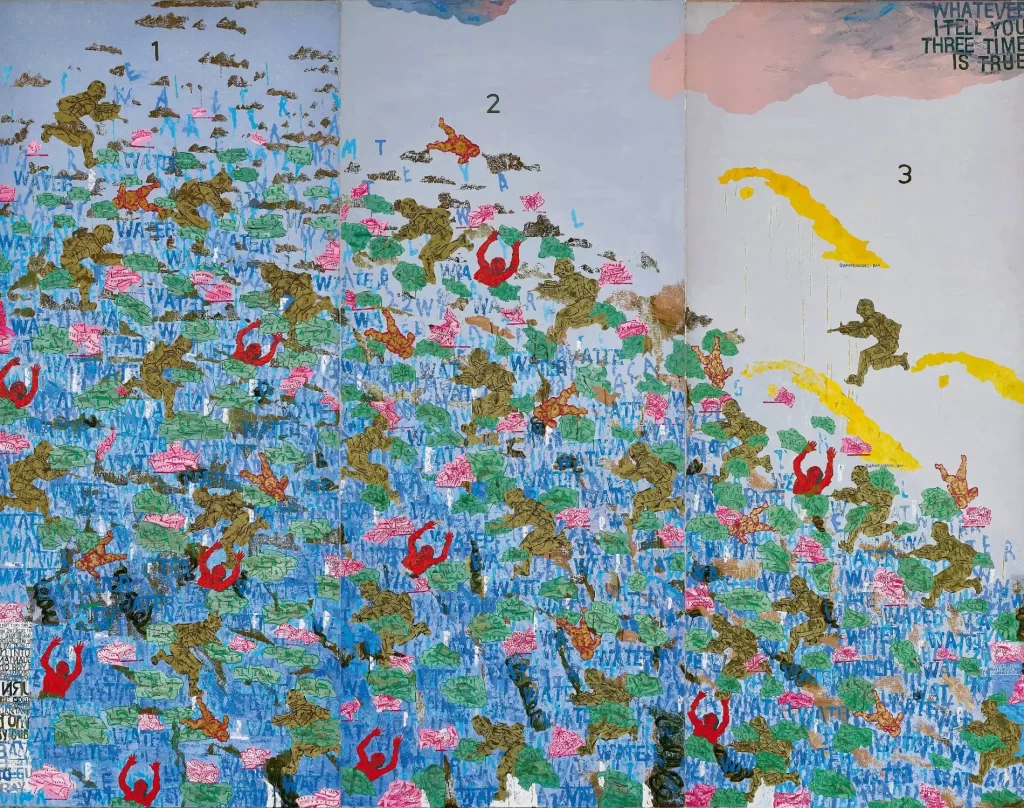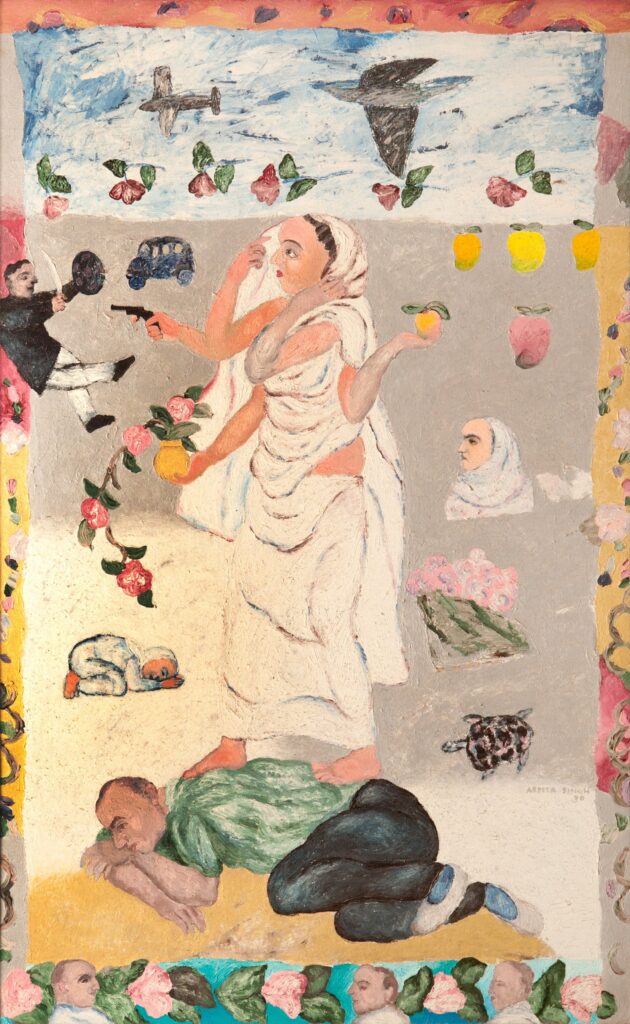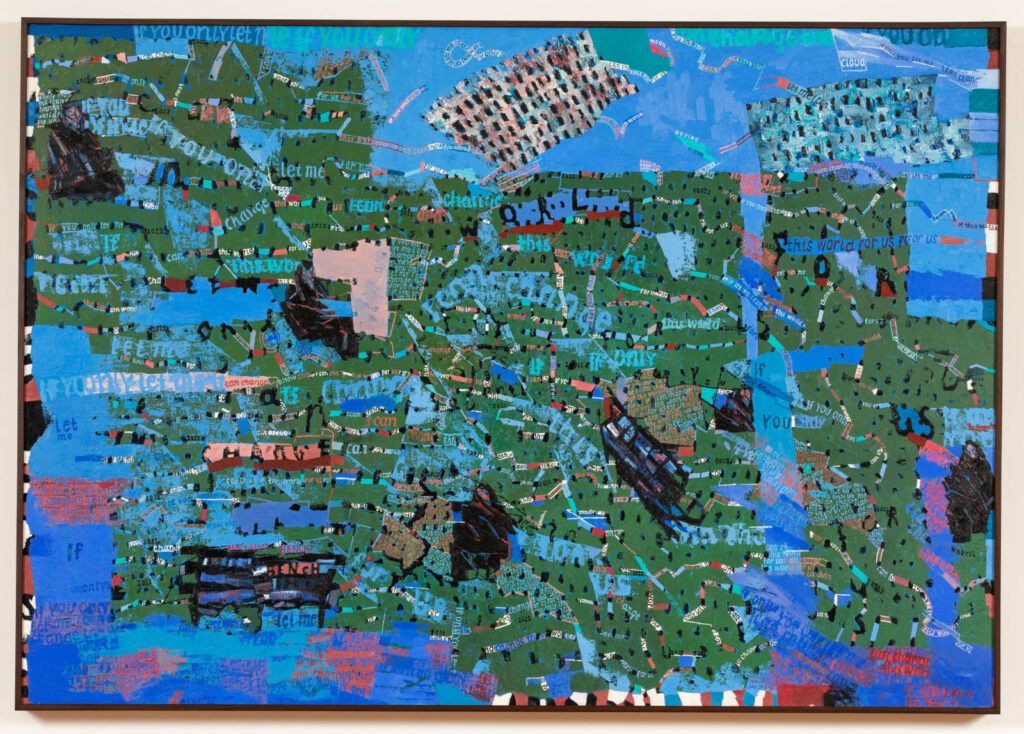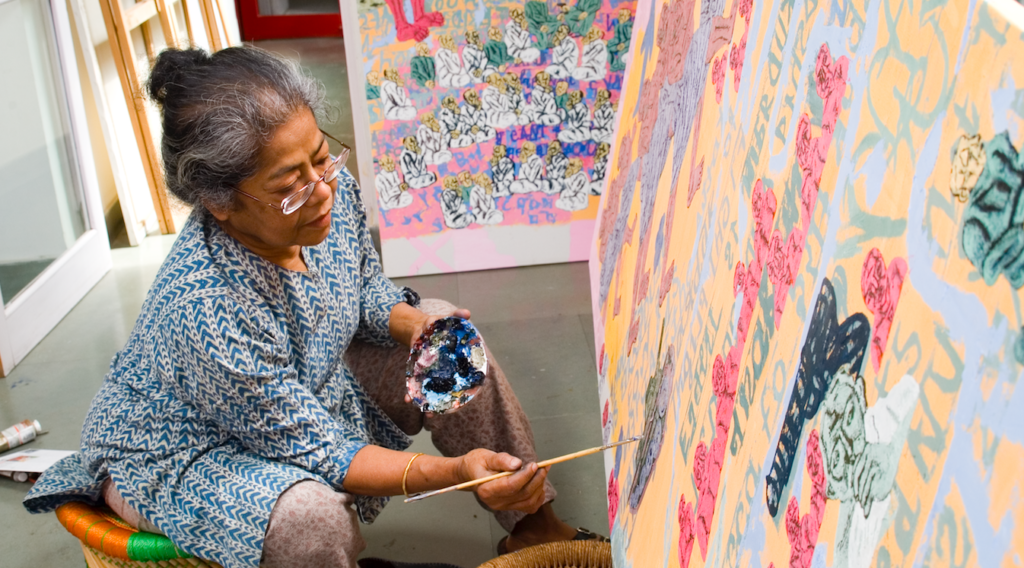As an artist, we seldom interrogate our themes. Sometimes, we are eclipsed by our emotions which take over our canvas, engendering our lives and our backgrounds. However, some artists simply reflect the state of the ‘self.’ One of those artist is Arpita Singh. Arpita Singh artworks boast simple themes. To her, however, you interpret her artworks, it is evidentiary of your life. Growing up, she was a resourceful kid, drawing on newspapers and catalogues. An octogenarian now, these minute details are still present in her visual language.
Arpita Singh Artist Biography
Arpita Singh was born on 22 June 1937 in the affluent Bengal Presidency. By 1946, she had relocated to Delhi with her mother and brother. She married Indian artist, Paramjit Singh in 1962, with whom she had a daughter, Indian artist Anjum Singh. She attended Delhi Polytechnic from 1954 to 1959, earning a Diploma in Fine Arts. She was the founder member of the artist collective, ‘The Unknown,’ composed of the Delhi Polytechnic alumni. They held their first group show in 1962.

Post graduation, Arpita Singh worked at the Weavers’ Service Centre and the Cottage Industries Restoration Program, an extension of the Government of India. Her first solo show was organised by Roshan Alkazi in 1972 at the Kunika Chemould Gallery. Since then, she has proven to be unstoppable, showing her works in group and solo exhibitions around the world. Arpita Singh paintings have made rounds at influential art galleries in London, Tokyo, Madrid, Boston, Bern, Paris, Delhi, Sydney, Havana, Greece, New York, and Bangalore. Due to her contribution to the Indian art scene, she was honoured with the 2011 Padma Bhushan.
Arpita Singh Artist Style
If we had to dilute Arpita Singh’s artist style, she would undoubtedly dominate the categories of figurative and modernist artists. In a way, she is a champion of women. She constantly plays with the gender dynamics of the modern world. Borrowing from her background and community experience, she arranges these societal elements in patterns; an unfathomable phenomenon. Arpita also plays with the myriad folk arts of India.

Looking at the trajectory of her successful career, one would have to start with her earliest watercolour on paper. She has also worked with black and white ink. By the 1980s, she had incorporated Bengali folk tales into her canvas, focusing primarily on women. Arpita Singh paintings depicted them doing their daily chores. By the next decade, she had transitioned to oil on canvas. In some of her paintings, she draws naked women. However, these do not carry sexual overtones, instead, they elucidate her vulnerability; the idea behind these artworks stemmed from the social injustices and discrimination against women. She has also introduced elements of Emergency, the 1984 anti-Sikh riots, the Gulf War, and Indira Gandhi’s assassination, amongst more tumultuous events.

Arpita Singh Artworks
Throughout her career, Arpita Singh has uplifted women and their toils. Keeping them in focus, she presented them as entities riddled with not only the brunt of ‘expectations’ but also with strong emotions. Let’s talk about famous Arpita Singh paintings.
Devi Pistol Wali (1990)
In ‘Devi Pistol Wali,’ Arpita Singh modernises the tale of ‘Durga.’ The deity who is often seen in red wears a white saree. She has swapped her trident in favour of a gun (reminiscent of 80s Arpita Singh paintings). Under her lies a man, who eerily resembles Rajiv Gandhi wearing white tennis shoes. At the time, the picture made waves, especially the following year which marked the assassination of Gandhi. While some applauded her for her simple forms and effective deliveries, some considered it to be in bad taste.

If You Only Let Me (2022)
In this painting, Arpita Singh paints a field of emerald green with park benches and solitary black figures. These distorted figures seem like they have been deliberately scratched out. Looking at the painting may make you feel morose, evoking the feeling of loss. A sense of loneliness envelopes the viewer while they gaze at her work. However, to Amrita, this painting is a mirror and the reflection is the audience’s chaos and confusion, that’s buried deep within.

Image Courtesy – India Art Fair
Contributor





